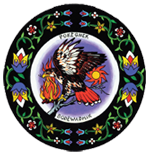The Natural Resources and Conservation Division within Kowabdanawa odë kė will conserve, protect, and enhance habitats for fish, wildlife, and cultural resources to benefit the Tribal citizenry. Services offered to the Pokagon Band include conservation, management, and propagation of the Tribe's fish and wildlife resources. These services will be offered through 3 main services:
habitats for fish, wildlife, and cultural resources to benefit the Tribal citizenry. Services offered to the Pokagon Band include conservation, management, and propagation of the Tribe's fish and wildlife resources. These services will be offered through 3 main services:
- Terrestrial (forest/woodland) and aquatic habitat (rivers, lakes, streams, wetlands) assessment
- Restoration of lost or declining habitat and vegetation
- Management of culturally significant habitats such as Black Ash swamps and Sugar maple forests will include conservation, management, and species propagation
Turtle Booklet
Order Your Plush Turtle
Citizens, spouses, and government team members may order a Plush Turtle here:
Prescribed Burning
Prescribed burning is an important management tool for maintaining and enhancing grasslands. Fire was an important natural part of the development and maintenance of grasslands, forests, and wetlands, throughout history.
For thousands of years, tall grass prairies and open brushlands were kept free of trees by the occasional wildfires that cleared the landscape every two to 50 years. These fires were caused by lightning or set intentionally by early Tribes. They had discovered that fire killed woody plants but encouraged fruit-bearing shrubs and forage-producing grasslands.

Present-day research and experience have shown that prescribed burning can be an effective management tool. Prescribed burns are used most frequently to maintain and restore native grasslands.
Wildlife Management
- Assist the Pokagon Band of Potawatomi in developing hunting and fishing rules and regulations to preserve, protect, and enhance fish & wildlife resources on tribal property, and assist with the issuance of tribal hunting, fishing, and gathering licenses and permits.
- Conduct baseline fish and wildlife inventories to develop forestry, wildlife, and fisheries habitat management plans. Prepare written reports concerning fish & wildlife populations and habitats and issue recommendations.
- Implement and manage: the Wetlands Reserve Program and Natural Resource Conservation Service – WHIP & EQIP projects through the establishment of warm-season prairies, shallow wetland marshes, food plots, and annual prescribed burning.
- Keep abreast of new environmental policies and legislation. Contribute ideas about changes to policy and/or legislation based on ecological findings.
Spotlight Project: Wetlands Reserve Program (WRP)
The WRP is a specially designed U.S. Department of Agriculture/Natural Resource Conservation Service program in which the Band was able to enroll 1,147 acres of property near North Liberty, Indiana, in 2008. The program aims to restore vegetative conditions and re-create marsh and other wetland habitats using new and innovative methods of vegetation management and low-impact earthwork.
The DNR has successfully implemented many of these practices to achieve a successful wetland management program. Since 2008, the property (formerly in conditions to those of the Grand Kankakee Marsh) has experienced several different types of wetland habitat re-plantings with native vegetation, undergone prescribed burns in the mesic prairie zones, and was fit with water-control structures to rebound the natural flow of the surface water and to restore the original state of the wetland.
Enjoyed the Facebook live event about turtles on our property and the cultural and language teachings surrounding these creatures? Learn more here.
